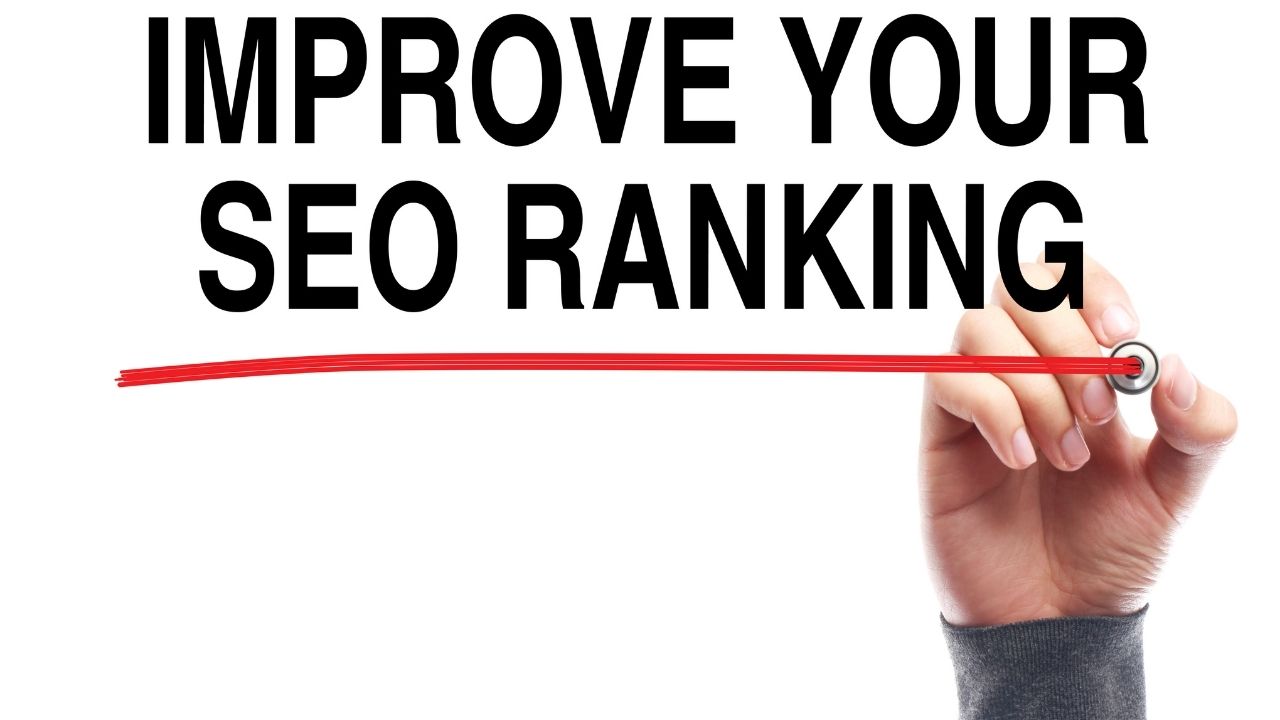
This article will show you how to write SEO content. How to outline your article and research your keywords. Also, how to incorporate secondary keywords. Transition words are important. Once you've got your content written, it's time to optimize it for search engines! These are some great tips. These are some of our top tips to make your article more search-engine friendly.
You can outline your content
An effective strategy to ensure your article's SEO content is search engine-friendly is to outline it. There are many different ways to structure an outline. It is easy to establish a base point by using the C.R.A.A.P. The following are some examples of how to structure an outline:
An outline can help you identify thin sections and decide whether a section is necessary. You can use it to decide whether to merge multiple topics or if you should nest specific sections. This outline can also be used to help determine your target audience. Keyword placement is only one aspect that should be considered. An outline should include all elements necessary to create a great blog post. Here are some advantages of outlining your SEO content.
Create a short outline of the content you want to write. In this outline, include your primary keyword as well as a list of related terms. You should also consider your target audience, word count and audience. Include the core questions you are looking to answer, call-to-action, suggested meta description and title tag. Don't forget to outline your subheadings, links, and subheadings. A content outline will help you create cohesion and maximize your writing time.
It is important to have a purpose in your blog post. Avoid using cliches or cliches. Your blog post should engage and be relevant to your audience. Make sure to include your target audience in the introduction. This will increase the interest of your audience in your content. This will make your content easier to read. You should outline your SEO content before starting to write. It can even help you write better blog posts.
Your keywords should be researched
There are several steps to follow when researching your keywords. First, identify the most crucial keywords. While you might think that your articles may not be relevant to the topic at hand, Google Trends or AdWords will help you identify the most important keywords in your niche. Once you've identified the most popular keywords, start thinking about how to fit your content to your keyword strategy.

Never forget that keyword research isn’t about tricking Google. It’s about determining the content your audience needs. To create content that people will want to read, it is important to understand how they search. You could use the keyword "Thailand" to refer to a blog posting about Thailand or a travel guide for humans. You will get high rankings if your content meets the needs and desires of your target audience.
After you have identified the keywords that you wish to target, it is time to do some research. Try Google searches for them and see what comes up on the SERP. Compare your competitor websites and determine which one is more effective for your target audience. Take into account the user intent. Does the keyword suggest that users are searching Thailand travel guides? If so, it would be better to write about a specific location.
It is also important to check the monthly searches volume for your target keywords. It is important to analyze the MSVs of your targeted keywords to see how many times they are on the first page. Using this information, you can target more keywords for your SEO content. And once you've compiled a list of keywords, you can write articles and blog posts based on each keyword. You should also review your content and check for any keyword cannibalization.
Add secondary keywords
It is smart to use secondary keywords in your SEO content for a number of reasons. It helps improve the quality of your content and appeals to readers. Second, it helps you avoid writing articles focused solely on your primary keyword, which is unlikely to match the reader's intentions. By using secondary keywords, your content will better match what your audience is looking for, and the tone of your article will be more natural.
SEO efforts are only as successful as the keywords you choose to use in your content. It will help your readers navigate your articles and increase their chances of getting found in search results. It is important to include your primary keywords at three to five percent density in the article title, first paragraph and metatag description. Secondary keywords can be used in one to two places throughout your content. This is a great technique to increase search engine visibility for your content.
If used correctly, secondary keywords can help you rank higher in SEO. Be sure that the secondary keywords you use are related to the primary keyword. These secondary keywords can be used for additional content ideas like an article on a chocolate cake recipe. Review the list before starting to write a section. This is the best way to include secondary keywords. Avoid repetitive writing and use synonyms where possible. Use a LSI keyword search to refresh your content.
Google's autocomplete function is another way to include secondary keywords in SEO content. This feature allows users search for what other people are searching and allows them to drop the search down to a list. These phrases are not random. They are real searches that people are doing online. Your website's chances of being found by the reader can be increased by using secondary keywords. The Google Keyword Planner can help you learn more about secondary keyword and to improve your content.
Include transition words
You can make your SEO content stand out amongst the rest by using transition words. They do not impact your SERPs ranking but they can make your posts more readable and better understand context. You can use transition words to signal cause and effect. This guide will show you how to effectively use transition terms. Then, apply these tips to your SEO content.

Transition words indicate relationships between paragraphs. The connections between paragraphs might not be obvious to readers without these words. However, transition words will make your content more clear, engaging, and informative. No matter whether you use them for SEO or not they are important for creating clear, well-structured content. They will reward you with better SEO.
Transition words can alert your readers to any significant changes in the content. They can be thought of like signs on a twisting road. Your readers will likely scan through your content quickly, so it is important to use transition words to keep them on track. These words might not be appropriate for every type or content, but they will ensure that the user's experience with your content is pleasant and efficient. If you are a newbie, consider reading other content to gain insight into how transition words work.
Yoast SEO, WordPress and other platforms have tools that can ensure your content contains transition words. These tools will analyze your content and pinpoint when it may need them. Optimize your SEO with three types transition words. Yoast SEO makes your content more readable by using three types of transition words. Yoast also looks for transition words with two parts:
Optimize your content to speed up
There are several ways to optimize your SEO content for speed, and focusing on one of them can greatly increase your site traffic. Follow these guidelines to get an edge on your competitors. For example, you can use meta tags and keyword phrases to make your content more search engine friendly. You can increase your page's ranking in search engines by using these strategies.
Use images. Image descriptions are crucial in search engine optimization as they aid the reader in finding your content. However, not every image can be indexed. It is essential that you use the alt text attribute of HTML to describe images. You should make sure that it is descriptive and gives context to the search engines. HubSpot's SEO Panel can recognize optimized images. It also helps improve user experience. You can also add relevant hyperlinks to the optimized content.
FAQ
What Does SEO Stand For for Small Businesses?
Today, small businesses face the challenge of competing against large corporations that spend millions advertising. Search Engine Optimization (SEO), enables smaller businesses to reap the benefits of this same marketing power without spending a fortune.
How can I get started with SEO
SEO can be done in many different ways. It is important to first identify the keywords you wish to rank for. This process is called "keyword research." Next, optimize each page of your website for these keywords.
Optimization includes adding relevant titles, descriptions, and meta tags; creating unique page URLs; and linking to other websites. After optimization has been completed, you'll need to submit your website to search engines like Google, Yahoo!, and Bing.
To determine if you are succeeding, you must keep track of your progress.
What is a PPC Ad?
Pay-per click ads are text-based adverts that appear at the top and bottom of pages.
These ads are extremely targeted so advertisers only pay for clicks.
PPC advertising is very similar to Pay Per Call advertising, which we'll discuss later.
Where Should My Website Be Located?
Your website should appear near the top of all search results. It must appear at the top or near every search result. There may be hundreds of pages for some search terms. What makes your website different from these competitors?
Why Should I Use SEO?
There are many good reasons to use search engine optimization.
It helps increase traffic to your site by ensuring that it appears high in search engine results.
Second, it helps increase conversions by ensuring that users find exactly what they're looking for when they type into their search bar.
It increases brand awareness by helping customers to find your business online.
It also improves the user experience by allowing users to navigate quickly through your website.
Finally, it increases trust with potential customers by showing that your business cares enough about it to ensure it ranks high in search engines.
How Can I Get More Traffic From Facebook?
Facebook offers several different ways to increase traffic to your website. Facebook ads are one way to get more traffic. You can target specific audiences with Facebook ads based on their interests, location, and demographics. You can also set a daily limit and track which posts do well.
What are the differences between SEO strategies?
Different SEO strategies can be used, including search engine optimization (SEO), paid-per-click (PPC), and social media optimization.
SEO optimizes content using certain keywords. This can be done with text formatting or HTML code.
This helps make sure your site appears higher on search results pages.
Social media optimization is the process of optimizing your website so that it can be used on social networks, such as Twitter, Facebook, or Google+.
These will help build your brand online and make it more popular with visitors who are searching for related subjects.
PPC ads also appear at the top Search Results Pages, showing relevant products & services.
Google paid search is the most used PPC ad type. These cost money but can be extremely effective.
PPC advertising is also available in display ads as well as video ads and sponsored posts.
Statistics
- And 90%+ of these backlinks cite a specific stat from my post: (backlinko.com)
- These guides are designed and coded 100% from scratch using WordPress. (backlinko.com)
- Deleting those 10k pages is one of the main reasons that he improved his site's organic traffic by nearly 90%: (backlinko.com)
- 64% of marketers actively create SEO campaigns because they help hit multiple key performance indicators (KPIs), including increasing traffic, helping your site rank for relevant keywords, improving your conversion rate, and much more. (semrush.com)
- : You might have read about the time that I used The Content Relaunch to boost my organic traffic by 260.7%: (backlinko.com)
External Links
How To
How do I create my first blog?
It's simple! WordPress is an excellent platform for creating a blog. It is easy to customize the appearance of a blog's appearance by changing the fonts and colors or customizing its layout. They can also add plugins which allow them to alter certain aspects of their site based upon visitor activity.
You can download many templates free of charge from WordPress.org. Premium templates cost money. Premium templates offer additional features like extra pages and plugins as well as advanced security.
Once you've downloaded your template, you'll need to sign up for a free account with a hosting provider to upload your files and run your blog. Many hosting companies offer free accounts. However there are limitations to how much space you can have, how many domains your site can host, and how often you can send emails.
If you choose to use more then one domain name, each email address will be required. Some hosts charge a monthly fee for this service.
You may be wondering why anyone would pay for a blog to be hosted online if you are new to blogging. Many hosts offer unlimited storage space so that your files will not be deleted even if they are accidentally deleted.
Many hosts let you host multiple domains. That means that you can have different websites under the same hosting plan. It is possible to avoid multiple email accounts by registering for one interface, allowing you to manage all of your sites from the same place.
Some hosts include social media sharing icons on their dashboards. This allows visitors share posts easily across the internet.
You can usually manage your blog through the tools offered by hosting providers. You can check the performance stats for your site, view how many visitors each article has received, and even compare your traffic to other blogs.
These tools can make managing your blog easier and faster, so they're worth checking out before you choose a hosting plan.
To sum up:
-
Pick a topic that's relevant to you business.
-
Create engaging content;
-
Optimize your site using SEO techniques;
-
Promote your site using social media channels;
-
Regularly review your statistics in order to make changes if needed.
-
Last but not least, make sure to keep your blog updated.
You should create high-quality content, market it effectively, and monitor its success.